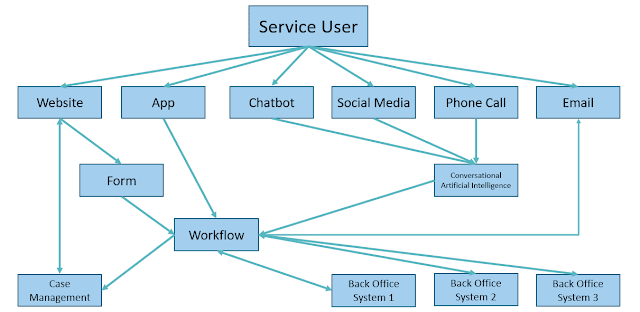A few years ago, after checking the website of a well known flat-pack furniture company I visited their nearest store only to find that the item I wanted was nowhere to be seen. “They only update the stock on the website every now and again” a helpful employee told me, which was however no recompense for my wasted journey.
Whilst most local government services are a tad more complex than selling Billy bookcases, it’s experiences such as this I want to avoid for council service users, where people who use one channel are treated differently or are given conflicting information to others. At best it presents an impression of disorganisation and at worse it worsens the digital divide.
That’s why we’re starting to roll out an omni-channel, or Many Channels, One Service approach at my place.
Why “Many Channels, One Service” though?
It’s easier to remember and more descriptive of its aims than “omni-channel”, and if you’re introducing new concepts and practices across an organisation, it’s made harder if you have to teach everyone a new vocabulary too.
Speaking the same language helps win hearts and minds, and culture is as much a factor as technology in any change programme, something I wrote about a few years ago about our first Digital by Design Day.
Perhaps you’re thinking though, isn’t Many Channels, One Service just rolling-out a customer relationship management system?
That’s one part of it, but it’s also introducing online forms, reengineering back office processes to include workflow and automating as much as that workflow as possible. It’s keeping the service user informed along the way and allowing those who want to, to log in and see the progress of their requests.
It’s also about making sure every channel from the website, our chatbot, social media, and the more traditional routes through a customer service agent or conversational AI kick off that same process providing a consistently good service for everyone and helping to narrow the digital divide.
We still promote our online services as the channel of choice, and in the first six months of our digital permits around 96% of people applied for one through our website, but for those that didn’t, the process was the same, just assisted by a customer service agent, and if they choose to log on to our website in future, they’ll see a digital permit waiting there for them.
We’ve a long way to go with Many Channels, One Service, but for me it’s the next evolution of digital by default, helping us to meet the expectations of our service users.

Comments
Post a Comment